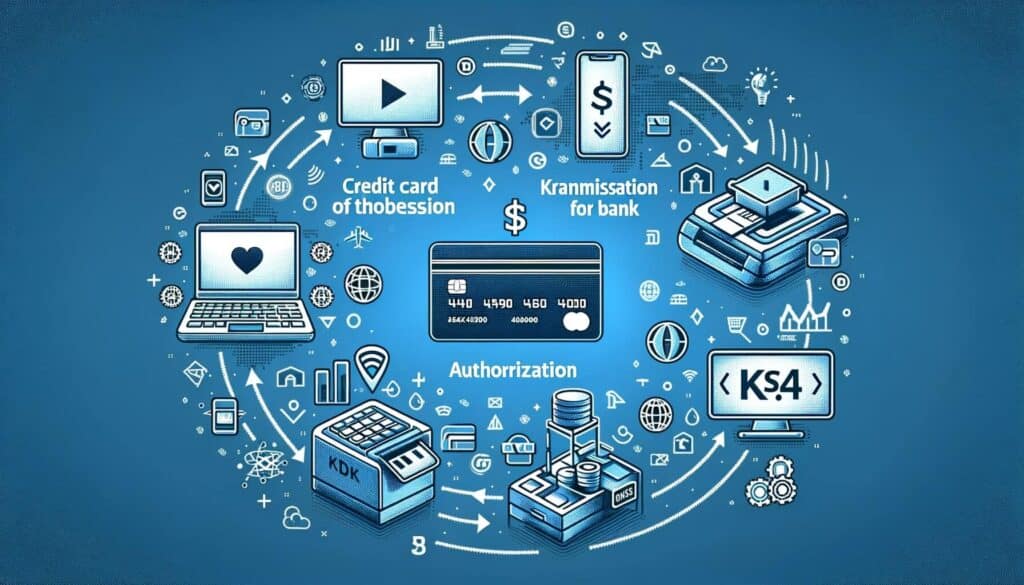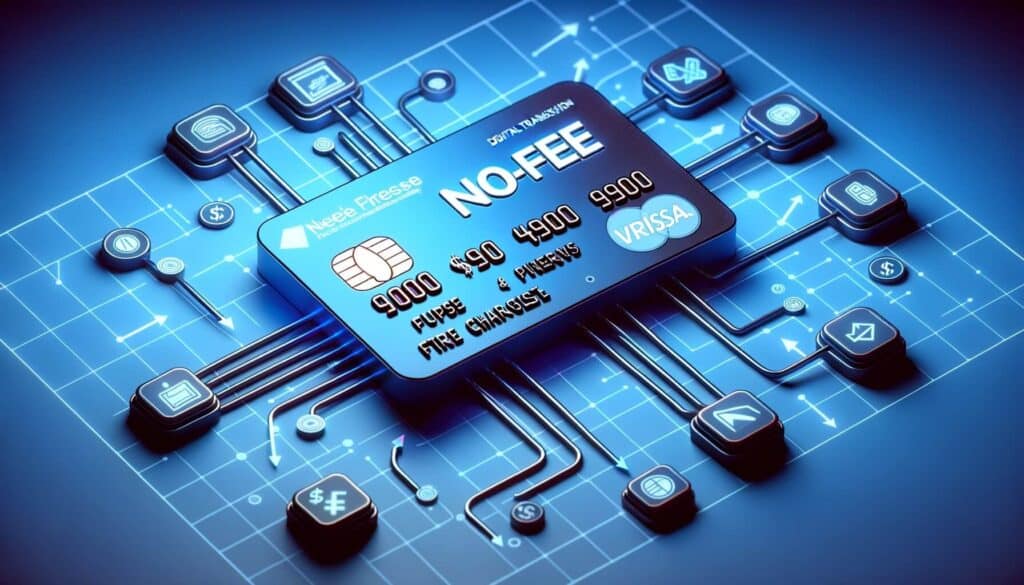
By Cindy Gardea February 14, 2025
In today’s digital age, credit card payments have become the norm for consumers. As a result, merchants must adapt to this trend by offering convenient and secure payment options. However, traditional credit card processing can come with hefty fees that eat into a merchant’s profits. This is where no-fee credit card processing comes into play.
In this comprehensive guide, we will explore the basics of credit card processing, the benefits of no-fee credit card processing for merchants, how it works, factors to consider when comparing processors, common misconceptions, tips for successful implementation, and frequently asked questions.
Understanding the Basics of Credit Card Processing

Before delving into the world of no-fee credit card processing, it is essential to understand the basics of credit card processing itself. When a customer makes a purchase using a credit card, the transaction goes through a series of steps to ensure the payment is authorized and processed. These steps involve the merchant, the customer’s credit card issuer, and the payment processor.
The process begins when the customer presents their credit card to the merchant for payment. The merchant then swipes, dips, or manually enters the card information into a point-of-sale (POS) system or virtual terminal. This information is securely transmitted to the payment processor, which acts as an intermediary between the merchant and the customer’s credit card issuer.
The payment processor sends the transaction details to the credit card issuer for authorization. The issuer checks the customer’s available credit, verifies the transaction’s legitimacy, and either approves or declines the payment. Once the payment is authorized, the issuer sends an approval code back to the payment processor, who then relays this information to the merchant.
Finally, the merchant completes the transaction by finalizing the sale and providing the customer with a receipt. The payment processor transfers the funds from the customer’s credit card issuer to the merchant’s bank account, usually within a few business days.
The Benefits of No-Fee Credit Card Processing for Merchants

No-fee credit card processing offers several advantages for merchants, making it an attractive option for businesses of all sizes. Here are some key benefits:
1. Cost Savings: The most obvious benefit of no-fee credit card processing is the elimination of processing fees. Traditional credit card processing typically involves interchange fees, assessment fees, and other charges that can add up quickly. By opting for a no-fee processor, merchants can significantly reduce their expenses and increase their profit margins.
2. Transparency: No-fee credit card processors often provide transparent pricing models, allowing merchants to see exactly what they are paying for. This transparency helps merchants make informed decisions and avoid unexpected fees or hidden charges.
3. Predictable Budgeting: With no-fee credit card processing, merchants can accurately predict their monthly expenses related to payment processing. This predictability allows for better budgeting and financial planning, as there are no surprises or fluctuations in processing costs.
4. Competitive Advantage: Offering no-fee credit card processing can be a unique selling point for merchants. In a competitive market, this can attract customers who are looking for businesses that prioritize transparency and cost savings.
5. Enhanced Customer Experience: By eliminating processing fees, merchants can pass on the savings to their customers. This can result in lower prices or additional incentives, ultimately enhancing the overall customer experience and fostering customer loyalty.
How No-Fee Credit Card Processing Works

No-fee credit card processing operates on a different business model compared to traditional processors. Instead of charging interchange fees and other transaction-based fees, no-fee processors generate revenue through alternative means. Here’s how it works:
1. Subscription Model: Many no-fee credit card processors operate on a subscription-based model. Merchants pay a monthly or annual fee to access the processor’s services, which includes payment processing, reporting tools, and customer support. This subscription fee replaces the traditional transaction fees, allowing merchants to process credit card payments without incurring additional costs.
2. Value-Added Services: Some no-fee processors offer value-added services that merchants can opt into for an additional fee. These services may include advanced analytics, inventory management, loyalty programs, or integrations with other business tools. By offering these optional services, no-fee processors can generate additional revenue while still providing a cost-effective payment processing solution.
3. Partnerships and Referral Programs: No-fee processors may also generate revenue through partnerships and referral programs. By partnering with other service providers or offering referral incentives to existing customers, these processors can earn commissions or fees from these collaborations. This revenue helps offset the costs of providing no-fee credit card processing.
Comparing No-Fee Credit Card Processors: Key Factors to Consider

When choosing a no-fee credit card processor, merchants should consider several key factors to ensure they select the right provider for their business. Here are some factors to consider:
1. Pricing Structure: While the primary appeal of no-fee credit card processing is the elimination of transaction fees, it is essential to understand the provider’s pricing structure. Some processors may have different tiers or pricing plans based on the merchant’s transaction volume or specific needs. Merchants should carefully review the pricing details to ensure they align with their business requirements.
2. Payment Options: Merchants should consider the payment options supported by the processor. Ideally, the processor should be able to handle various payment methods, including credit cards, debit cards, mobile payments, and online payments. This ensures that customers have flexibility in how they make their purchases.
3. Integration Capabilities: Integration with existing business systems is crucial for seamless operations. Merchants should evaluate whether the no-fee processor can integrate with their POS system, e-commerce platform, accounting software, or other tools they use. This integration streamlines processes, reduces manual work, and improves efficiency.
4. Security and Compliance: Protecting customer data and ensuring compliance with industry standards is paramount. Merchants should verify that the no-fee processor adheres to Payment Card Industry Data Security Standard (PCI DSS) requirements and offers robust security measures, such as encryption and tokenization, to safeguard sensitive information.
5. Customer Support: Reliable customer support is essential for merchants, especially when it comes to payment processing. Merchants should assess the level of customer support provided by the no-fee processor, including availability, response times, and the channels through which support can be accessed.
Common Misconceptions about No-Fee Credit Card Processing
Despite the numerous benefits, there are some common misconceptions surrounding no-fee credit card processing. Let’s address these misconceptions and provide clarity:
1. Limited Features: Some merchants may assume that no-fee credit card processing comes with limited features or functionality compared to traditional processors. However, many no-fee processors offer a wide range of features, including reporting tools, analytics, integrations, and value-added services. Merchants should carefully evaluate the features offered by different providers to ensure they meet their specific needs.
2. Hidden Fees: While traditional processors often have hidden fees or complex pricing structures, no-fee processors aim to provide transparent pricing. However, merchants should still review the terms and conditions of the provider to ensure there are no unexpected charges or hidden fees associated with the subscription or value-added services.
3. Lower Quality of Service: Some merchants may worry that opting for a no-fee processor means compromising on the quality of service. However, reputable no-fee processors prioritize customer satisfaction and provide robust support, reliable payment processing, and advanced features. Merchants should research and read reviews to ensure they choose a reputable provider.
Tips for Implementing No-Fee Credit Card Processing Successfully
Implementing no-fee credit card processing successfully requires careful planning and execution. Here are some tips to ensure a smooth transition:
1. Research and Compare Providers: Conduct thorough research and compare different no-fee credit card processors. Consider factors such as pricing, features, integration capabilities, security measures, and customer support. This evaluation will help identify the provider that best aligns with your business needs.
2. Review Contracts and Terms: Carefully review the contracts and terms of the chosen provider. Pay attention to any cancellation fees, contract duration, and any additional charges for value-added services. Understanding the terms will help avoid surprises or misunderstandings down the line.
3. Train Staff: Properly train your staff on how to use the new payment processing system. Ensure they understand the features, functionalities, and any changes in the payment process. This training will minimize errors and ensure a seamless customer experience.
4. Communicate with Customers: Inform your customers about the transition to no-fee credit card processing. Highlight the benefits they will receive, such as potential cost savings or improved pricing. Clear communication will help manage customer expectations and build trust.
5. Monitor and Evaluate: Continuously monitor the performance of the no-fee credit card processing system. Evaluate transaction volumes, customer feedback, and any issues that arise. This monitoring will help identify areas for improvement and ensure the system is meeting your business needs.
Frequently Asked Questions about No-Fee Credit Card Processing
Q1. Is no-fee credit card processing suitable for all types of businesses?
A1. No-fee credit card processing can benefit businesses of all sizes and industries. However, it is essential to evaluate the specific needs and transaction volumes of your business to determine if it is the right fit.
Q2. Are there any hidden fees associated with no-fee credit card processing?
A2. Reputable no-fee credit card processors aim to provide transparent pricing. However, merchants should carefully review the terms and conditions to ensure there are no unexpected charges or hidden fees.
Q3. Can I still accept all major credit cards with no-fee credit card processing?
A3. Yes, most no-fee credit card processors support all major credit cards, including Visa, Mastercard, American Express, and Discover. Merchants should verify the supported payment options before choosing a provider.
Q4. How long does it take to receive funds from credit card transactions with no-fee processing?
A4. The time it takes to receive funds can vary depending on the processor and the merchant’s bank. Typically, funds are transferred to the merchant’s bank account within a few business days.
Q5. Can I switch back to traditional credit card processing if needed?
A5. Yes, merchants can switch back to traditional credit card processing if they find that no-fee processing is not suitable for their business. However, it is important to review any contractual obligations or cancellation fees before making the switch.
Conclusion
No-fee credit card processing offers a compelling alternative to traditional payment processing for merchants. By eliminating transaction fees and providing transparent pricing, no-fee processors help merchants reduce costs, enhance the customer experience, and gain a competitive edge.
However, it is crucial for merchants to carefully evaluate different providers, understand the pricing structure, and consider factors such as payment options, integration capabilities, security measures, and customer support. With proper planning and implementation, no-fee credit card processing can be a game-changer for merchants, allowing them to focus on growing their business while providing a seamless payment experience for their customers.
